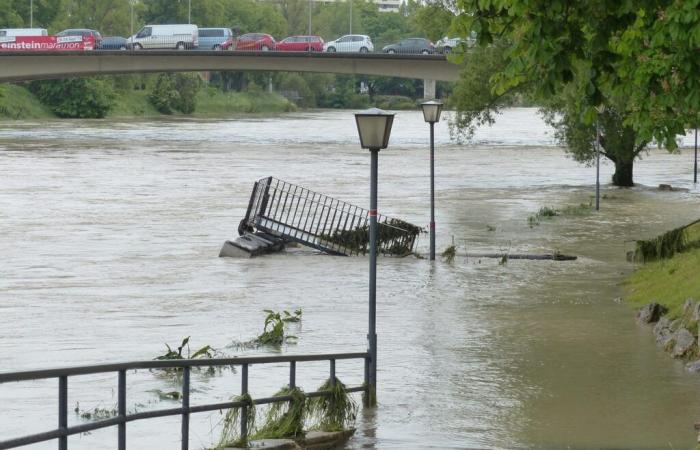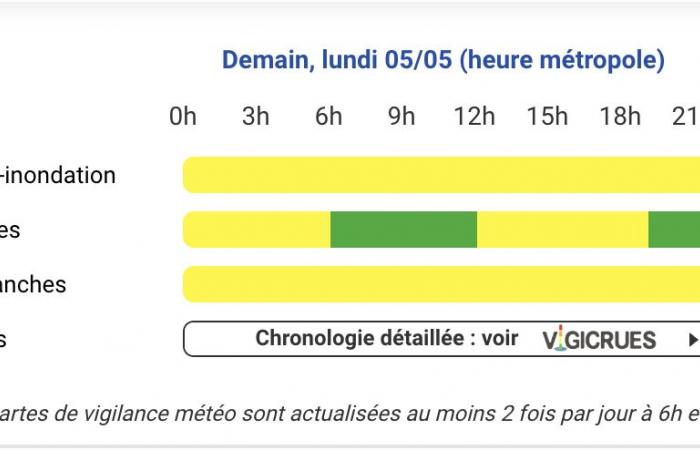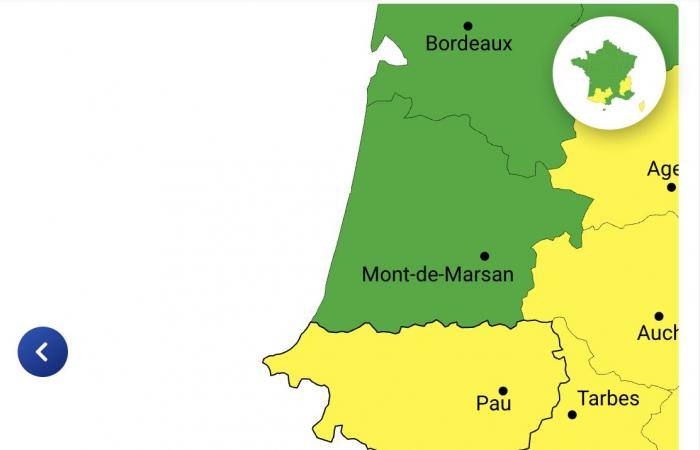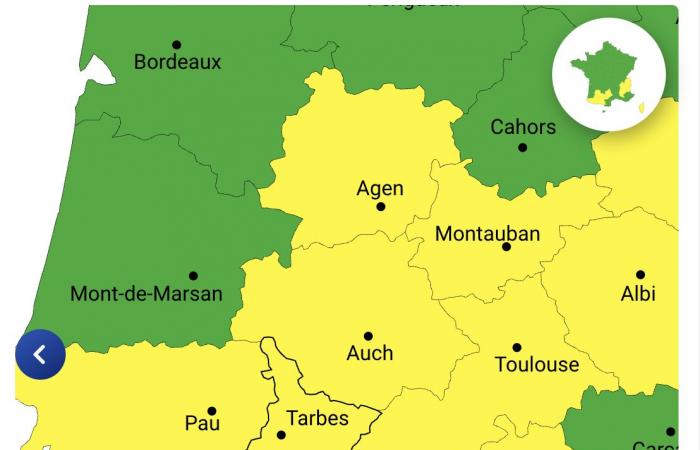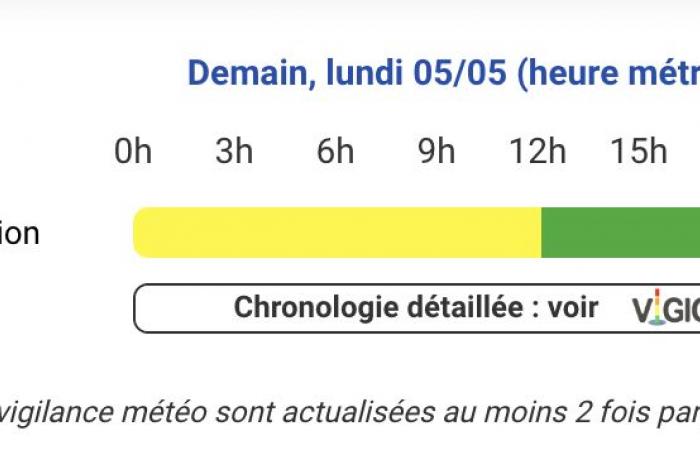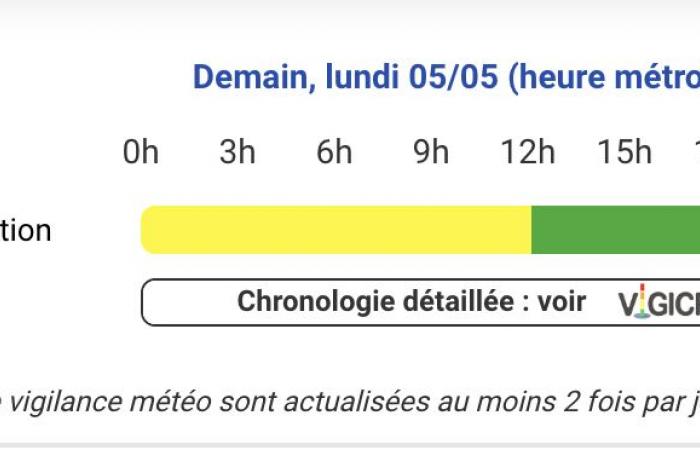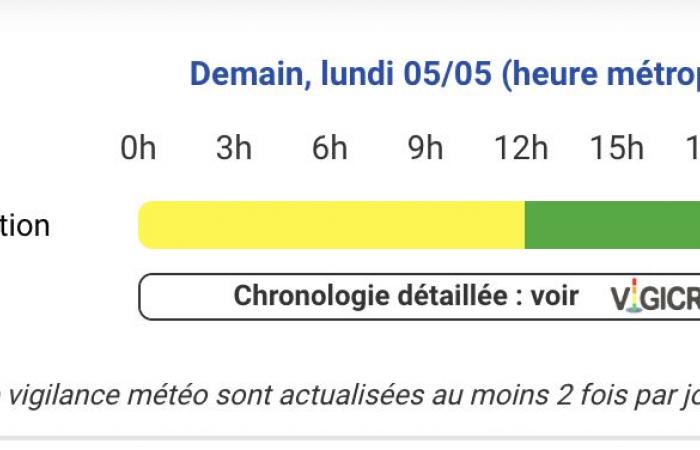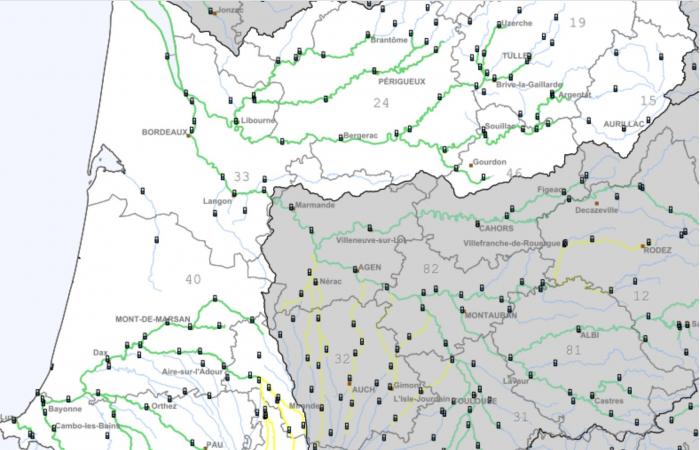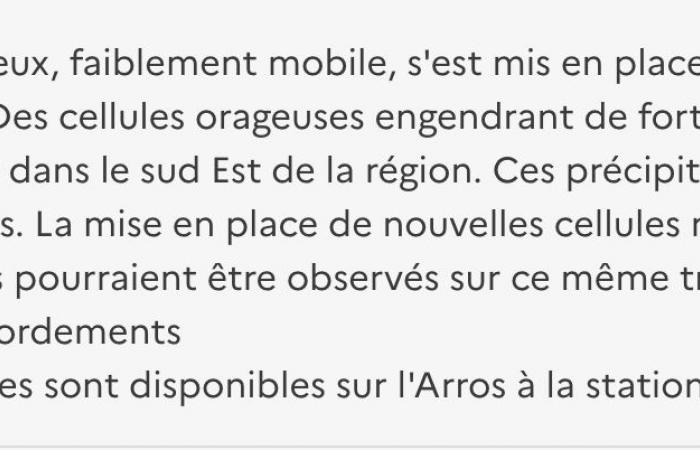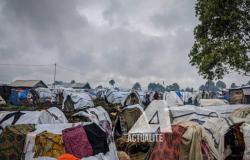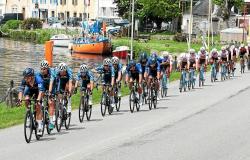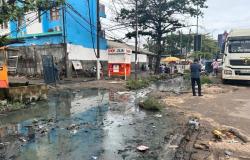This Monday, May 5, 2025, Météo France placed several departments in yellow rainy and floods yellow. Are concerned: the Hautes-Pyrénées, the Pyrénées-Atlantiques, Haute-Garonne, Tarn-et-Garonne, Gers and Ariège.
Météo France has placed several departments in yellow vigilance for rain-round and floods this Monday, May 5, 2025. This concerns the departments of Hautes-Pyrénées, Pyrénées-Atlantiques, Haute-Garonne, Tarn-et-Garonne, Gers and Ariège.
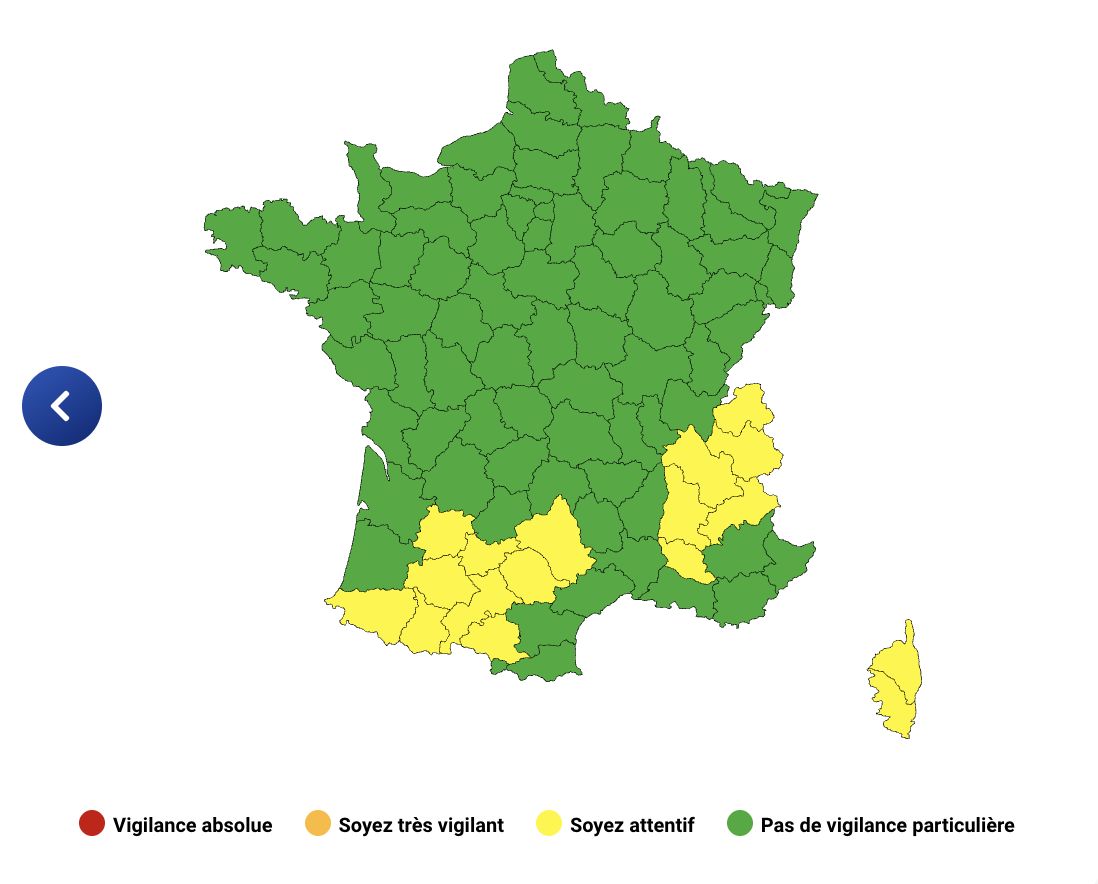
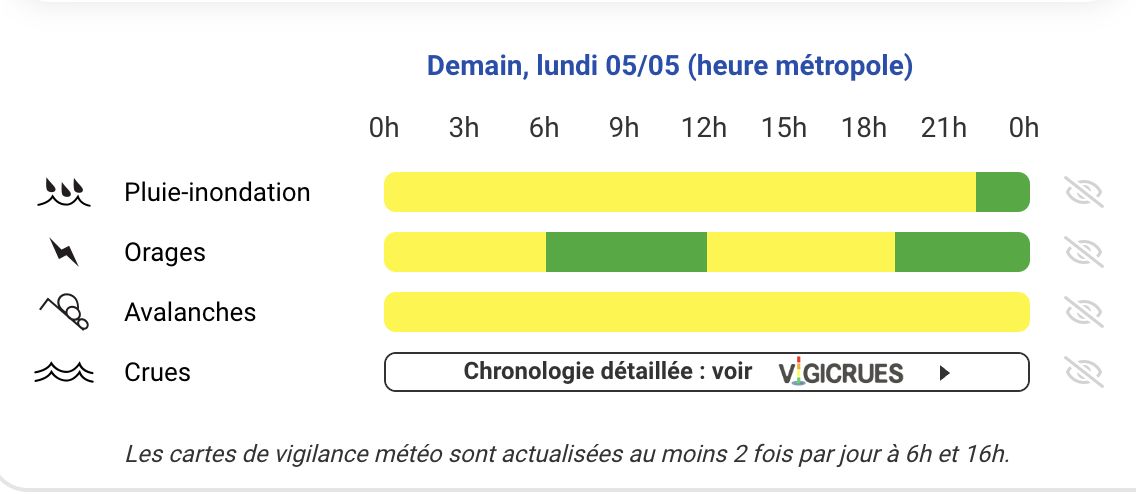
Progressive lull in the south, clarified in the north
From the Pyrenees to the Massif Central and to the eastern borders, the morning is still well disturbed with a covered sky and frequent rains in particular from the Jura to the Alps as well as on a large Pyrenean foothills. In the afternoon, the rains mainly maintain from the Jura to the Southern Alps, on the Pyrenees and Languedoc, sometimes taking a stormy character. Elsewhere, beautiful clarifieds are developing. In Corsica, the weather remains unstable all day with frequent stormy showers, especially on the western facade of the island, where the cumulatives could be significant. On the rest of the country, time is more variable with alternating clarification and cloudy passages, sometimes accompanied by small showers in particular near the Channel. The north to northeast wind is sensitive near the English Channel where the gusts reach 50 to 70 km/h. Mistral, tramontane and west wind around Corsica blow from 50 to 70 km/h. Minimum temperatures are lowered between 4 and 9 degrees over the northern half, locally 2 or 3 degrees from Hauts-de-France to Normandy, and between 8 and 13 degrees in the south, 11 to 16 degrees near the Mediterranean. The maximums range from 11 to 16 degrees in the regions near the English Channel, they range between 14 and 19 degrees elsewhere, or even 20 to 23 degrees near the Mediterranean.
The Pyrénées-Atlantiques
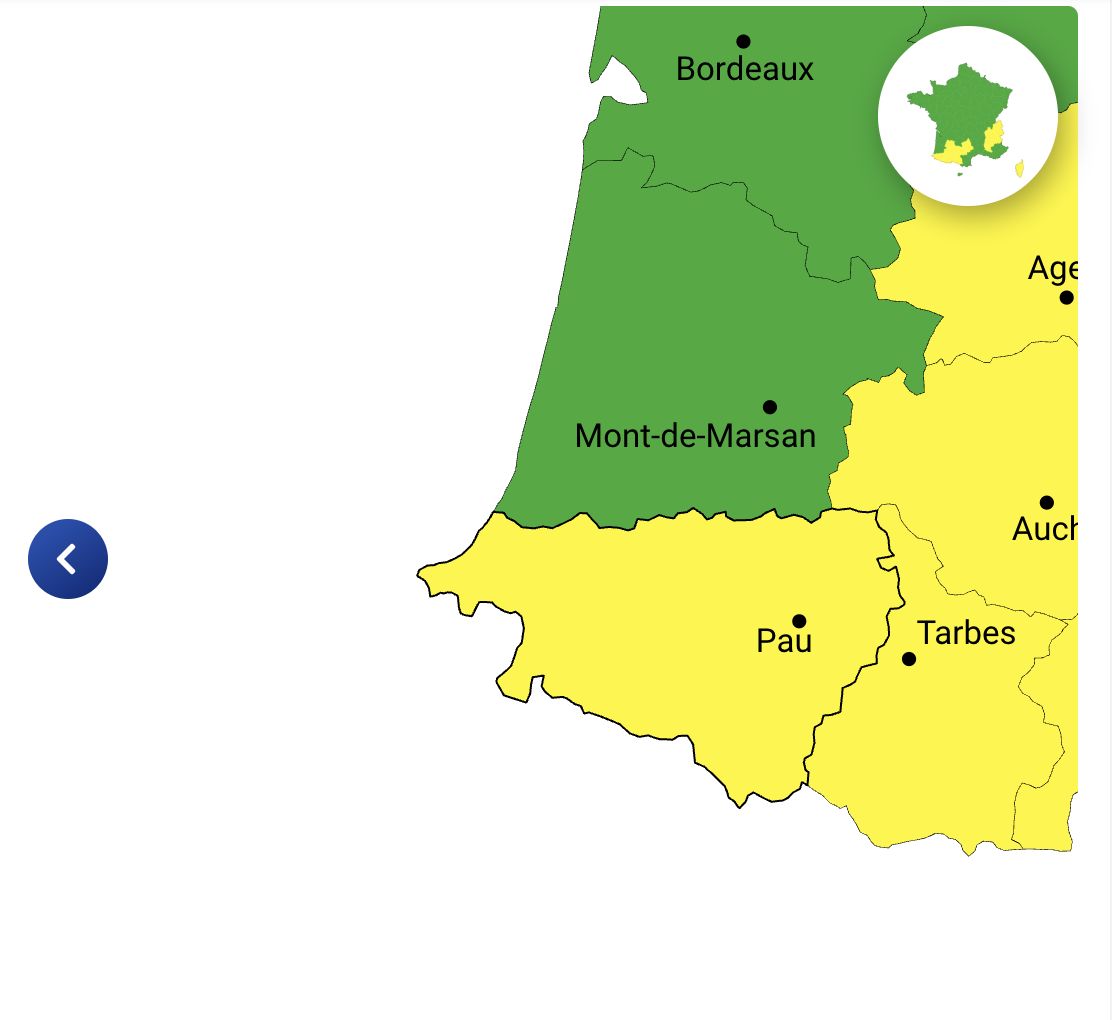
The Department of Pyrénées-Atlantiques is placed in a vigilance yellow rain-rumming this midnight on Monday at 12 noon.

The Hautes-Pyrénées

The Hautes-Pyrénées department is placed in yellow vigilance at the rain-rude this midnight on Monday at 12 noon. The department is also placed in yellow alert for flood risks.

The Haute-Garonne
The Haute-Garonne department is placed in a vigilance yellow rain-romance this midnight on Monday at 12 noon. The department is also placed in yellow alert for flood risks.

Tarn-et-Garonne
The department of Tarn-et-Garonne is placed in yellow alert for risks of floods.

The Gers
The Gers department is placed in a vigilance yellow rain-rummage this midnight Monday at 6 a.m. It is also placed in yellow vigilance for risks of floods.

Ariège
The Department of Ariège is placed in a vigilance yellow rain-rummage this midnight Monday at 12 noon.

Floods
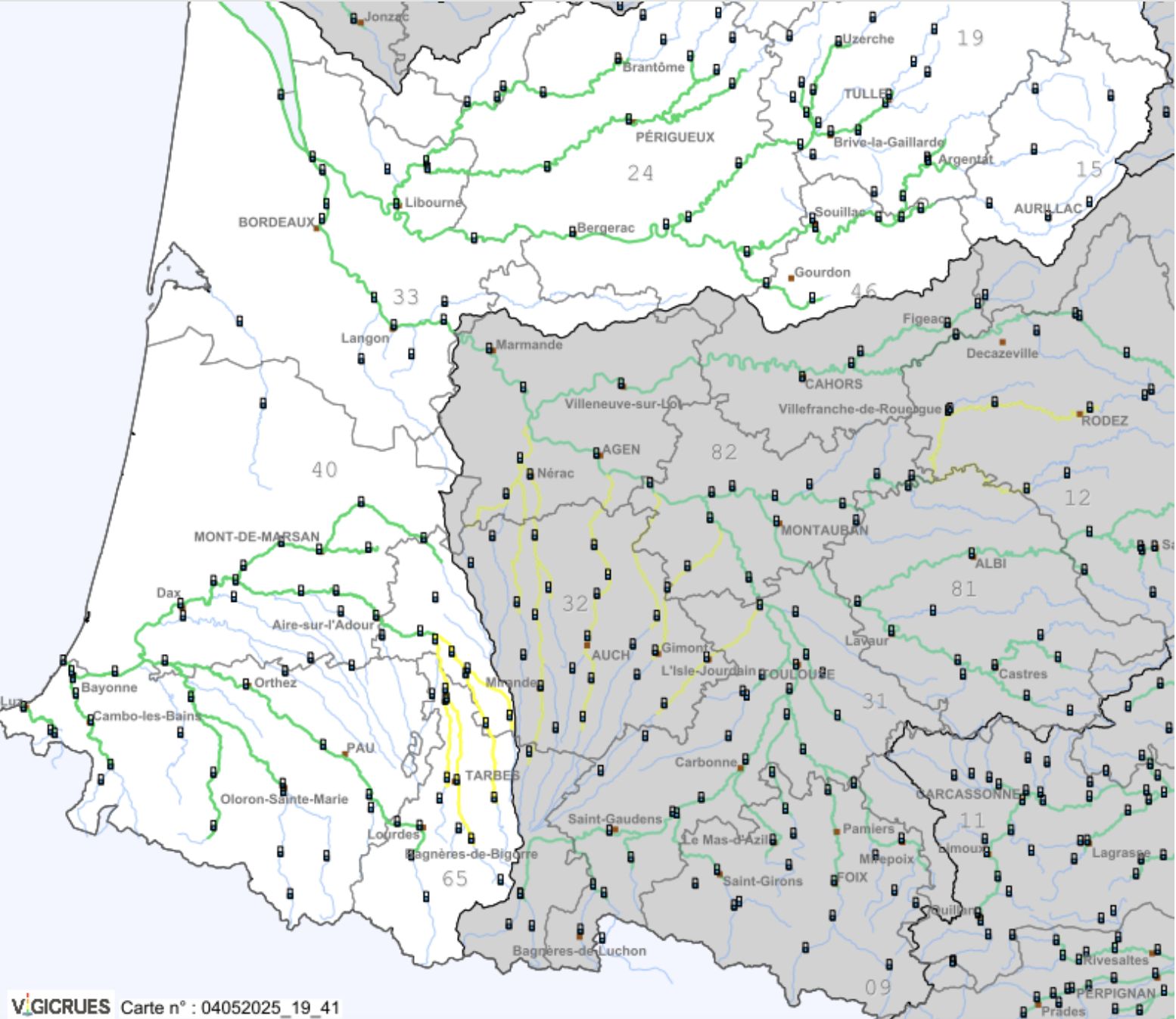


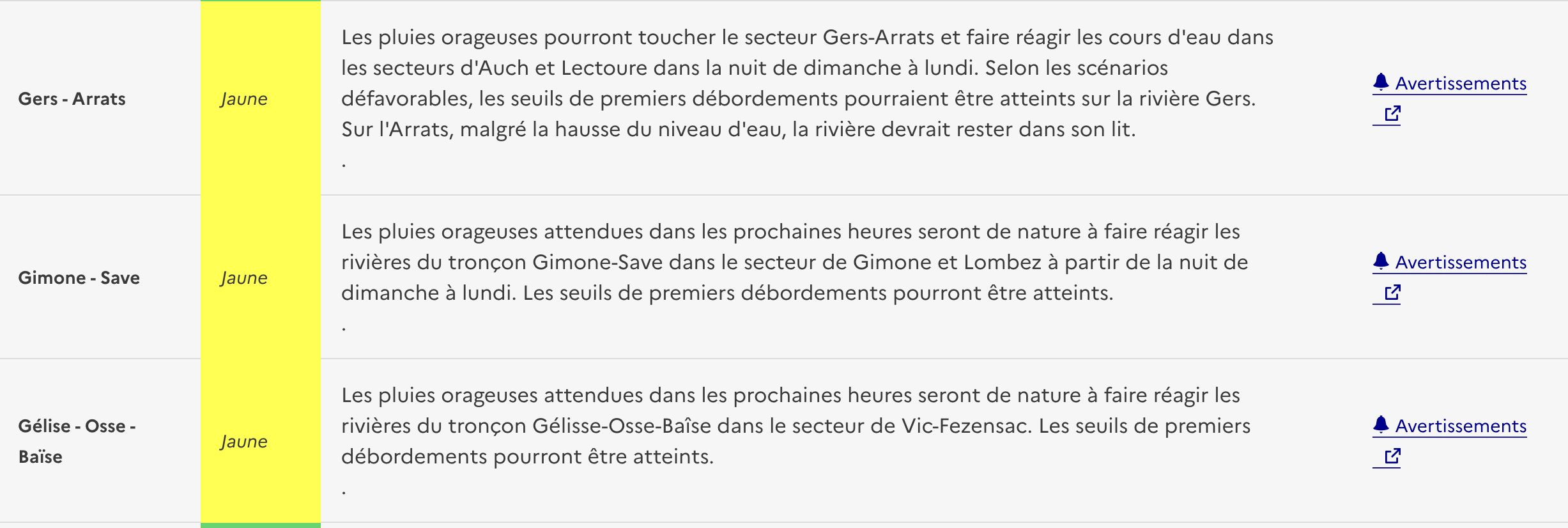
Rain-Inonndation phenomenon
The intense rains provide a very large amount of water over a short time (one hour to one day). This quantity can match the one usually received in a month (monthly normal) or in several months.
In the south of France, the cumulation observed can exceed 500 mm (1 mm = 1Litre/m2) in 24 hours. For the most violent phenomena, the cumulation exceeds 100 mm in an hour. Strong precipitation can result from several meteorological phenomena:
- violent thunderstorms and stationary
- A succession of localized thunderstorms
- a disturbance associated with extended rain
The streams in streaming and concentrating in rivers can cause floods. The flood can be due to a slow rise in waters in the plain region, the rapid formation of torrential floods or rainfall.
The importance of the flood depends on three parameters: the water height, the speed of the current and the duration of the flood. These parameters are conditioned by precipitation, but also by the state of the watershed and the characteristics of the watercourse.
In the Mediterranean regions, especially during the fall, lifts of hot and humid air can cause cumulation of several hundred liters of water/m2 in just a few hours. The stormy rains in the south-east of the central massif cause significant floods in this region (for example: the catastrophic floods of Nîmes in September 2005 where a cumulation of almost 430 mm was reached).
The whole territory of metropolitan France can be exposed to intense rains. They are however more frequent in the Mediterranean regions and the Alps.
Intense rains can cause devastating floods, especially in mountainous areas (Vaison-la-Romaine on September 22, 1992, Grand-Bornand on July 14, 1987).
On the contrary, it may not rain any more but that the river nevertheless comes out of its bed; This is particularly the case of the so -called “slow flood” rivers such as the Seine or for example the sum in 2001.
Large -scale floods generally result from persistent intense rains. The danger is amplified in winter, when there is little evaporation and the soils are saturated with water. The melting of the snowpack also contributes to raising the level of rivers. Rainwater runs towards the rivers, too quickly to flow afterwards, and they come out of their bed. These events are more frequent in the Mediterranean regions and in the Alps.
Pins of moderate intensity, which last several days can also cause floods by slow and progressive rise in water, this is the case of rivers such as the Seine.
The dangers
The risk of flooding is the conjunction of a phenomenon – water from a flood watercourse which can then come out of its usual flow bed – and an exhibition – human activity installed in the alluvial space (constructions, equipment and activities). The damage caused by floods therefore depend on natural factors (relief, nature and state of water saturation) but also on the establishment of human activities (land use). They can be reduced thanks to protective measures (dikes) and prevention (flood retention zone, development of zones to flood, information, preparation …).
The phenomenon can go unnoticed in a little inhabited area.
The cities also undergo a high runoff of the water due to waterproofed surfaces. On the other hand, the saturation of the rainwater evacuation network can cause considerable overflow and damage (example: Nîmes, October 3, 1988).
Finally, the damage can be aggravated by other factors: violent gusts of wind, landslides, ruptures of dikes, hail, strong waves.
The raw phenomenon
Large -scale floods are the consequences of intense or persistent rain. But the risk of flooding often lasts longer than the rainy episode. It is even systematic as soon as the watercourse is large: the propagation of the flood of upstream downstream can take several days before the watercourse resumes a usual level, that is to say in its bed.
Consequently, downstream of a river or a river, the flood is gaining momentum while the rains have sometimes stopped for several days. This is what happened in 2008 on the Loire between Puy and Nevers, the flood reaching Nevers and depriving the city of drinking water a week after the rains.
The flood can be dramatic downstream of a pool, while no precipitation affected the flooded places. Thus, the cities of Montauban and Moissac deplored nearly 400 dead in 1930, when the Tarn arrived swollen with rains fallen several days before, very upstream in the Cévennes.
Smart rivers can also cause floods in places not affected by rains. Thus, downstream of the Ardèche gorges, summer visitors can be surprised by floods formed in the Cévennes, without seeing the slightest cloud.
The importance of the flood depends mainly on three parameters: the water height, the speed of the current and the duration of the flood. These parameters are conditioned by precipitation from previous days, but also by the state of the watershed and the characteristics of the river. However, other parameters are not to be excluded:
The melting of the snowy mantle can also feed the flood and help maintain high water levels. During the flood of Paris in 1910, the melting of the snowy mantle in Burgundy largely favored the formation of the flood in Paris only 10 days later,
The water table, by saturating, can fuel a flood for weeks. The sum of the Somme in Abbeville in 2001 was maintained for several months, preventing those disaster victims from returning to live in their homes,
The wind or low atmospheric pressures can also hinder the flow of the flood river at its mouth at sea. In 1995, the sea wind thus prevented the flood of the bass plains of the Aude from evacuating.
The dangers
The risk of flooding is the conjunction of a phenomenon – water from a flood watercourse which can then come out of its usual flow bed – and an exhibition – human activity installed in the alluvial space (constructions, equipment and activities). The damage caused by floods therefore depend on natural factors (relief, nature and state of water saturation) but also on the establishment of human activities (land use). They can be reduced thanks to protective measures (dikes) and prevention (flood retention zone, development of zones to flood, information, preparation …).
The phenomenon can go unnoticed in a little inhabited area.
The cities also undergo a high runoff of the water due to waterproofed surfaces. On the other hand, the saturation of the rainwater evacuation network can cause considerable overflows and damage (example: Nîmes, October 3, 1988).
Finally, the damage can be aggravated by other factors: landslides, dike breaks, strong waves.

